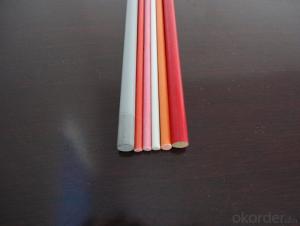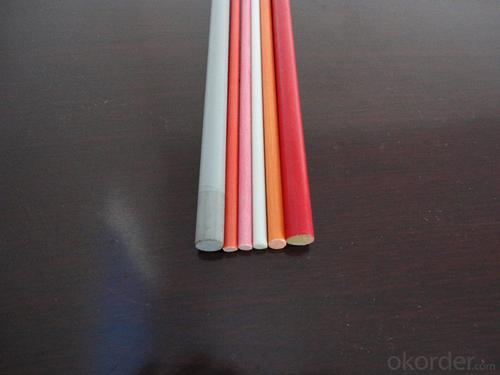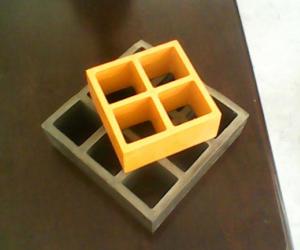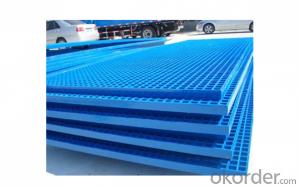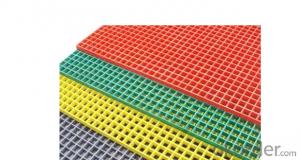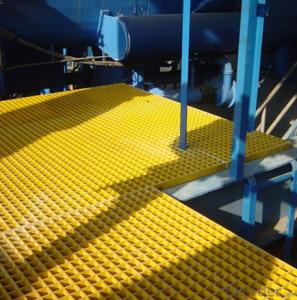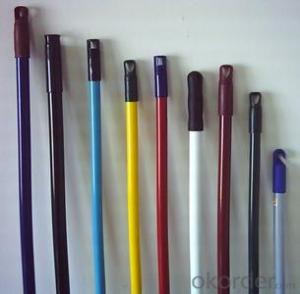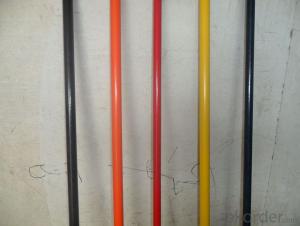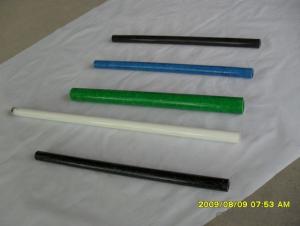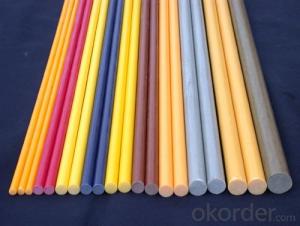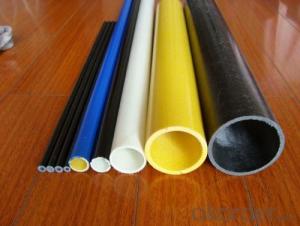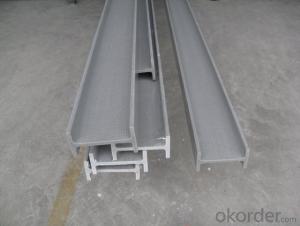FRP Pultrusion Profiles Fiberglass Tube Pole for Mop
- Loading Port:
- China Main Port
- Payment Terms:
- TT OR LC
- Min Order Qty:
- -
- Supply Capability:
- -
OKorder Service Pledge
OKorder Financial Service
You Might Also Like
Specifications of Fiberglass Tube Pole for Mop:
1. Multicolor fiberglass tubes
2. Light weight&high strength
3. Corrosion resistence
4. Anti-aging
Features of Fiberglass Tube Pole for Mop:
Corrosion resistant
High strength & light weight
Long service life
Fire retardant
Impact resistant
Nonconductive and thermal insulation
Non-magnetic electromagnetic transparency
Dimensional stability, Bright color
Low-maintenance
Size list of Fiberglass Tube Pole for Mop:
Diameter(mm) | Diameter(mm) | ||
OD | ID | OD | ID |
4 | 2 | 19 | 14.5 |
5 | 3 | 20 | 15 |
6 | 3 | 22 | 16 |
6 | 4 | 24 | 18 |
6.5 | 3 | 25 | 20 |
6.5 | 4 | 25.4 | 20 |
7 | 4 | 26 | 20 |
7 | 3 | 28 | 24 |
8 | 5 | 30 | 25 |
8 | 4 | 32 | 27 |
8.5 | 4 | 35 | 30 |
9 | 5 | 38 | 30 |
9.5 | 5 | 40 | 30 |
10 | 6 | 40 | 32 |
11 | 7 | 40 | 35 |
12 | 8 | 50 | 44 |
12.7 | 8 | 50.8 | 44 |
14 | 10 | 76 | 70 |
15 | 10.5 | 100 | 95 |
16 | 12 | 100 | 93 |
18 | 13 |
| |
- Q: Are FRP pultrusion profiles resistant to high winds or hurricanes?
- Yes, FRP pultrusion profiles are resistant to high winds and hurricanes. The inherent strength and durability of fiberglass reinforced plastic (FRP) combined with the pultrusion manufacturing process make these profiles highly resistant to extreme weather conditions, including high winds and hurricanes. They have been extensively tested and proven to withstand strong winds and turbulent weather events.
- Q: Can FRP pultrusion profiles be used in the telecommunications and data communication industry?
- Yes, FRP (Fiber Reinforced Plastic) pultrusion profiles can be used in the telecommunications and data communication industry. FRP pultruded profiles have several advantages that make them suitable for use in this industry. Firstly, FRP pultrusion profiles offer excellent electrical insulation properties, making them ideal for applications in the telecommunications and data communication industry where electrical conductivity needs to be minimized. FRP profiles do not conduct electricity, ensuring that there are no interference or grounding issues that could disrupt the transmission of data. Secondly, FRP pultrusion profiles are lightweight yet strong, providing a high strength-to-weight ratio. This makes them suitable for use in the construction of communication towers, antenna supports, and satellite dish mountings, where the profiles need to withstand wind loads and other environmental stresses. Additionally, FRP profiles have excellent corrosion resistance, which is crucial in the telecommunications and data communication industry where equipment is often exposed to harsh outdoor environments. Unlike traditional materials such as steel or aluminum, FRP profiles do not rust or corrode, ensuring the longevity and reliability of the infrastructure. Furthermore, FRP profiles can be easily customized and manufactured in various shapes and sizes to meet the specific requirements of telecommunications and data communication applications. This flexibility allows for the design and construction of complex structures that can accommodate different equipment and technologies. Overall, FRP pultrusion profiles offer a range of benefits that make them well-suited for use in the telecommunications and data communication industry. Their electrical insulation properties, lightweight yet strong nature, corrosion resistance, and flexibility in design make them a reliable choice for supporting infrastructure in this sector.
- Q: Are FRP pultrusion profiles resistant to chemical spills or leaks?
- FRP pultrusion profiles are known for their high resistance to chemical spills or leaks, making them an excellent choice for construction projects. One of the main benefits of using FRP as a building material is its exceptional chemical resistance. These profiles are made by impregnating continuous fibers with a thermosetting resin, resulting in a durable composite material. The selection of the resin used in FRP pultrusion profiles depends on the specific chemical environment they will be exposed to. This allows for customization and optimization of the composite's ability to withstand different chemicals. Additionally, the fibers used in FRP are typically chemically inert, further enhancing the profiles' resistance to chemical spills or leaks. FRP pultrusion profiles have proven to be highly resistant to a wide range of chemicals, including acids, alkalis, solvents, and corrosive substances. They are commonly used in industries such as chemical processing, water and wastewater treatment, oil and gas, and marine applications, where exposure to aggressive chemicals is common. Apart from their chemical resistance, FRP pultrusion profiles offer several other advantages. They are lightweight yet strong and stiff, making them ideal for applications that require structural integrity. They are also non-conductive, non-magnetic, and have excellent electrical insulation properties. Overall, FRP pultrusion profiles are a reliable option for environments where chemical spills or leaks are a concern. They provide robust resistance to a wide variety of chemicals, ensuring long-lasting performance and minimal maintenance requirements.
- Q: Can FRP pultrusion profiles be used in agricultural structures?
- Agricultural structures can indeed utilize FRP pultrusion profiles. FRP pultrusion profiles, also known as Fiber Reinforced Polymer profiles, possess numerous advantages that render them suitable for agricultural purposes. To begin with, the corrosion resistance of FRP profiles is of utmost importance in the agricultural industry, given the exposure of structures to harsh environments and chemicals like fertilizers and pesticides. Unlike conventional materials such as steel or wood, FRP does not rust or decay, ensuring enduring performance in agricultural structures. Furthermore, FRP profiles are lightweight yet durable, facilitating easy handling and installation in agricultural applications. Their high strength-to-weight ratios enable efficient construction, thereby reducing the necessity for heavy machinery during the installation process. Moreover, FRP profiles exhibit exceptional mechanical properties, including high stiffness and impact resistance, which prove advantageous for agricultural structures subjected to heavy loads, vibrations, or machinery impact. In addition, FRP pultrusion profiles can be designed to resist UV radiation, thereby preventing degradation from prolonged exposure to sunlight. This quality makes them suitable for outdoor agricultural structures consistently exposed to the elements. Lastly, FRP profiles are non-conductive, a critical advantage in agricultural environments where electrical safety is paramount. This characteristic eliminates the risk of electrical hazards associated with conductive materials like steel. In summary, FRP pultrusion profiles offer a reliable and efficient solution for a variety of agricultural structures, such as greenhouse frames, livestock enclosures, irrigation systems, and storage facilities. Their corrosion resistance, lightweight nature, high strength, UV resistance, and non-conductivity make them an ideal choice for agricultural applications.
- Q: Are FRP pultrusion profiles resistant to hydrocarbons?
- Yes, FRP (Fiber Reinforced Polymer) pultrusion profiles are generally resistant to hydrocarbons. The combination of various reinforcing fibers such as fiberglass or carbon fiber with a polymer matrix makes FRP materials highly resistant to chemical corrosion, including hydrocarbons. This resistance makes FRP pultrusion profiles a suitable choice for applications where exposure to hydrocarbons is expected, such as in oil and gas industry, chemical processing plants, or fuel storage facilities. However, it is important to note that the level of resistance can vary depending on the specific type of resin used in the FRP material and the concentration and temperature of the hydrocarbons involved. Therefore, it is recommended to consult with the manufacturer or supplier of the FRP pultrusion profiles to ensure their compatibility with the specific hydrocarbon environment in question.
- Q: Can FRP pultrusion profiles be used in electrical insulation applications?
- Yes, FRP (Fiber Reinforced Polymer) pultrusion profiles can be used in electrical insulation applications. FRP profiles offer excellent electrical insulation properties, making them suitable for a wide range of electrical applications. The high dielectric strength of FRP materials ensures that electrical currents are effectively contained within the desired pathways, preventing leakage and electrical hazards. Additionally, FRP profiles possess low electrical conductivity, reducing the risk of electrical shorts and improving overall safety in electrical insulation applications. The non-magnetic nature of FRP materials is also advantageous, as it eliminates the possibility of electromagnetic interference (EMI) in sensitive electrical systems. Furthermore, FRP pultrusion profiles are lightweight, corrosion-resistant, and have a long service life, making them a cost-effective and durable solution for electrical insulation applications.
- Q: How do FRP pultrusion profiles withstand extreme temperatures?
- The unique properties of the materials used in the construction of FRP (Fiber Reinforced Polymer) pultrusion profiles allow them to withstand extreme temperatures. To begin with, FRP pultrusion profiles consist of reinforcing fibers, such as fiberglass or carbon fiber, combined with a polymer resin matrix. These fibers provide exceptional strength and rigidity, while the resin functions as a protective binder, holding the fibers together and offering heat resistance. The reinforcing fibers employed in FRP pultrusion profiles possess high melting points and are inherently non-combustible. As a result, they retain their structural integrity even in elevated temperatures. This quality prevents the profiles from melting, warping, or becoming brittle under extreme heat conditions. In addition, the polymer resin matrix used in FRP pultrusion profiles is meticulously selected to have a high glass transition temperature (Tg). The Tg represents the temperature at which the resin transitions from a rigid, glassy state to a more flexible, rubbery state. By utilizing a resin with a high Tg, FRP pultrusion profiles can endure extreme temperatures without compromising their mechanical properties. Moreover, the pultrusion manufacturing process itself contributes to the ability of FRP profiles to withstand extreme temperatures. During pultrusion, the reinforcing fibers are carefully saturated with the resin matrix and then pulled through a heated die. This process ensures an even distribution of the resin throughout the profile, enhancing its resistance to heat and temperature fluctuations. In conclusion, the combination of high-performance reinforcing fibers, a carefully selected resin matrix, and the pultrusion manufacturing process enables FRP pultrusion profiles to endure extreme temperatures, making them suitable for a wide range of applications in diverse industries.
- Q: Can FRP pultrusion profiles be used in walkway systems?
- Walkway systems can indeed utilize FRP (Fiber Reinforced Polymer) pultrusion profiles. These profiles are renowned for their impressive strength-to-weight ratio, resistance to corrosion, and durability, which makes them an excellent option for various applications, including walkway systems. Due to the lightweight nature of FRP pultrusion profiles, they are easy to handle and install, which ultimately reduces construction time and cost. Moreover, their corrosion resistance ensures that they can endure harsh environmental conditions, such as exposure to moisture, chemicals, and UV radiation, without deteriorating or requiring frequent maintenance. FRP pultrusion profiles can be tailored to meet specific design requirements, enabling the creation of walkway systems with diverse shapes, sizes, and load-bearing capacities. These profiles can be manufactured with anti-slip surfaces or integrated with other safety features to enhance traction and prevent accidents on the walkways. Furthermore, FRP pultrusion profiles possess excellent electrical insulation properties, making them suitable for walkway systems in areas where minimizing electrical conductivity is necessary, such as power plants or electrical substations. All in all, the distinctive properties of FRP pultrusion profiles make them a dependable and versatile material choice for walkway systems. They offer long-lasting performance, low maintenance requirements, and enhanced safety.
- Q: Are FRP pultrusion profiles resistant to humidity or moisture?
- Yes, FRP pultrusion profiles are highly resistant to humidity or moisture due to their non-porous nature and the use of corrosion-resistant materials.
- Q: Can FRP pultrusion profiles be used in wastewater treatment facilities?
- Yes, FRP (Fiber Reinforced Polymer) pultrusion profiles can be used in wastewater treatment facilities. FRP pultrusion profiles offer several advantages such as high strength-to-weight ratio, corrosion resistance, and durability, which make them suitable for use in harsh environments like wastewater treatment facilities. In wastewater treatment facilities, there are various applications where FRP pultrusion profiles can be used. These include but are not limited to walkways, handrails, ladders, grating, and structural supports. The corrosion resistance of FRP makes it ideal for use in areas exposed to moisture and chemicals present in wastewater. Furthermore, FRP profiles are lightweight, which simplifies installation and reduces the load on supporting structures. The durability of FRP pultrusion profiles ensures long-term performance, even in aggressive environments. They have a high resistance to chemical attack, UV radiation, and bacterial growth, making them suitable for wastewater treatment applications. Additionally, FRP profiles can be designed to meet specific load requirements and can be easily fabricated to fit various shapes and sizes. Moreover, FRP pultrusion profiles offer excellent electrical insulation properties, which can be advantageous in wastewater treatment facilities where electrical safety is a concern. In summary, FRP pultrusion profiles can be effectively used in wastewater treatment facilities due to their corrosion resistance, durability, lightweight nature, and versatility in design and fabrication. These profiles can provide long-lasting solutions for various applications within these facilities, ensuring operational efficiency and minimizing maintenance requirements.
Send your message to us
FRP Pultrusion Profiles Fiberglass Tube Pole for Mop
- Loading Port:
- China Main Port
- Payment Terms:
- TT OR LC
- Min Order Qty:
- -
- Supply Capability:
- -
OKorder Service Pledge
OKorder Financial Service
Similar products
Hot products
Hot Searches
Related keywords
